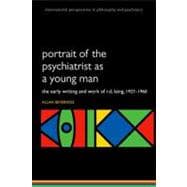
Note: Supplemental materials are not guaranteed with Rental or Used book purchases.
Purchase Benefits
What is included with this book?
| Introduction | p. xiii |
| Laing and theory | |
| Portrait of the psychiatrist as a young man 1927-1960 | p. 3 |
| Early years | p. 4 |
| School days | p. 8 |
| Medical school | p. 12 |
| Beginning as a doctor | p. 20 |
| The British Army | p. 26 |
| Gartnavel Royal Mental Hospital | p. 31 |
| The Southern General Hospital | p. 32 |
| London | p. 33 |
| Portrait of the psychiatrist as an intellectual: Laing's early notebooks, personal library, essays, papers, and talks | p. 38 |
| The quest to be an intellectual: the notebooks | p. 39 |
| Leaving medical school: what path to follow? | p. 44 |
| Laing's library | p. 46 |
| Medical school: first public pronouncements and early writings | p. 50 |
| Early papers | p. 57 |
| Laing and psychiatric theory | p. 64 |
| History of psychiatry | p. 64 |
| Psychiatric theories | p. 69 |
| Later psychiatric theories | p. 85 |
| Later psychotherapeutic approaches to schizophrenia | p. 91 |
| Laing and existential phenomenology | p. 101 |
| Introduction | p. 101 |
| Existentialism | p. 102 |
| Laing and individual existential thinkers | p. 107 |
| Phenomenology | p. 128 |
| Existential-phenomenological psychiatry | p. 131 |
| Laing on existential analysis | p. 135 |
| Laing and religion | p. 142 |
| Religious upbringing | p. 143 |
| Doubts as an adult | p. 149 |
| Religion and science, psychoanalysis, psychology, philosophy, and psychiatry | p. 152 |
| Laing and the arts | p. 158 |
| William Blake | p. 160 |
| Gerard Manley Hopkins | p. 161 |
| Dostoyevsky | p. 164 |
| Chekhov | p. 172 |
| Kafka | p. 173 |
| Camus | p. 174 |
| Artaud | p. 176 |
| The Unquiet Grave | p. 178 |
| Other writers | p. 179 |
| Laing and practice | |
| Laing in the Army | p. 185 |
| Army psychiatry | p. 186 |
| The Army reports | p. 188 |
| Dream analysis | p. 191 |
| An instance of the Ganser syndrome | p. 192 |
| Peter/'David' | p. 193 |
| Gartnavel Hospital and the 'Rumpus Room' | p. 199 |
| The historical background to Gartnavel Hospital | p. 199 |
| Laing at Gartnavel | p. 202 |
| Background to the 'Rumpus Room' experiment | p. 203 |
| The refractory ward | p. 207 |
| The 'Rumpus Room' as seen by Laing | p. 210 |
| Staff meetings | p. 213 |
| The larger staff discussion meetings | p. 214 |
| The 'Rumpus Room' results | p. 217 |
| Reflections | p. 219 |
| Individual patients at Gartnavel | p. 224 |
| Mrs C. | p. 224 |
| Miss M. | p. 225 |
| Miss L. | p. 226 |
| Miss A. | p. 226 |
| Betty | p. 227 |
| Magda | p. 229 |
| The coldness of death | p. 231 |
| The ghost of the weed garden | p. 238 |
| 'Julie' in The Divided Self | p. 242 |
| Laing at the Southern General Hospital | p. 249 |
| Southern General case conferences | p. 249 |
| Outpatients | p. 259 |
| Child psychiatry | p. 266 |
| Laing as a conservative revolutionary in clinical practice | p. 269 |
| Laing in London | p. 271 |
| Mr B. | p. 272 |
| Diana | p. 273 |
| David | p. 275 |
| Billy | p. 280 |
| Group psychotherapy | p. 282 |
| From the clinical notes to the published report | p. 284 |
| The Divided Self | p. 286 |
| Early drafts | p. 286 |
| Manuscript | p. 289 |
| The book | p. 291 |
| Laing on The Divided Self | p. 296 |
| Responses to The Divided Self | p. 297 |
| Critique | p. 299 |
| How Scottish was R.D. Laing? | p. 305 |
| Laing's influence on Scottish culture | p. 311 |
| Aftermath | p. 313 |
| Concluding remarks | p. 317 |
| References | p. 320 |
| Primary sources | p. 320 |
| Secondary sources | p. 322 |
| Unarchived sources | p. 335 |
| Index | p. 337 |
| Table of Contents provided by Ingram. All Rights Reserved. |
The New copy of this book will include any supplemental materials advertised. Please check the title of the book to determine if it should include any access cards, study guides, lab manuals, CDs, etc.
The Used, Rental and eBook copies of this book are not guaranteed to include any supplemental materials. Typically, only the book itself is included. This is true even if the title states it includes any access cards, study guides, lab manuals, CDs, etc.